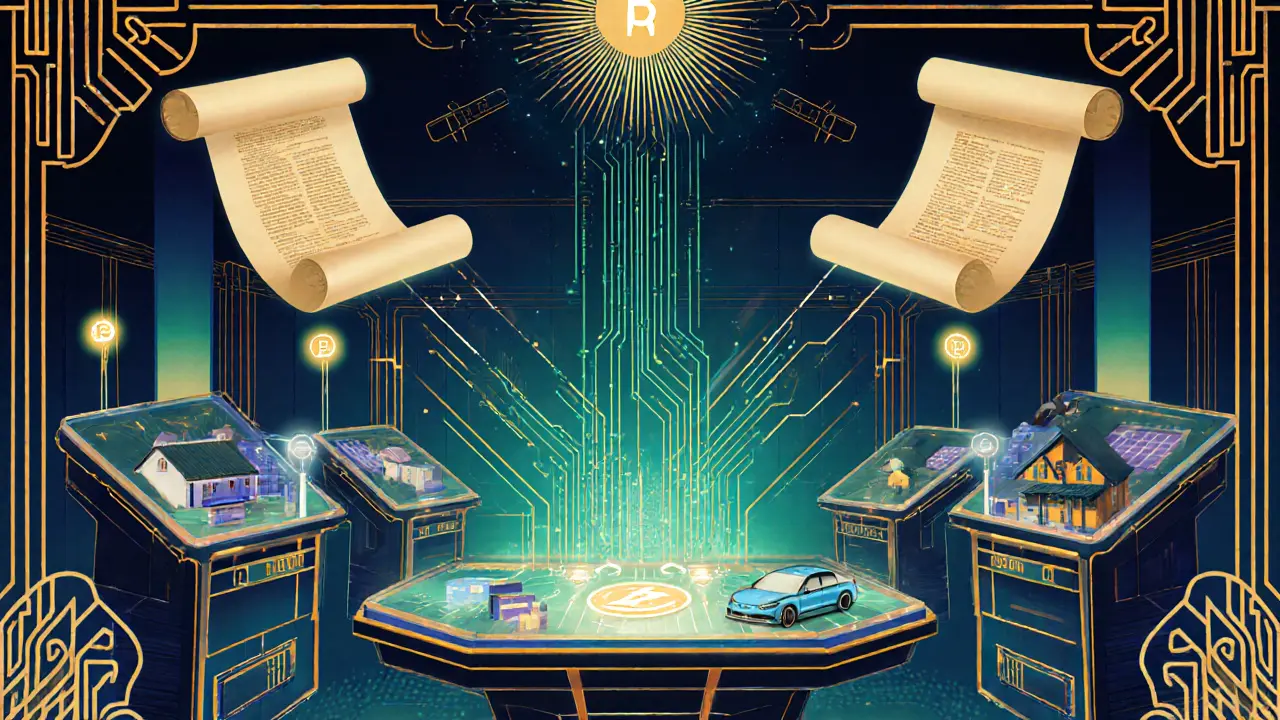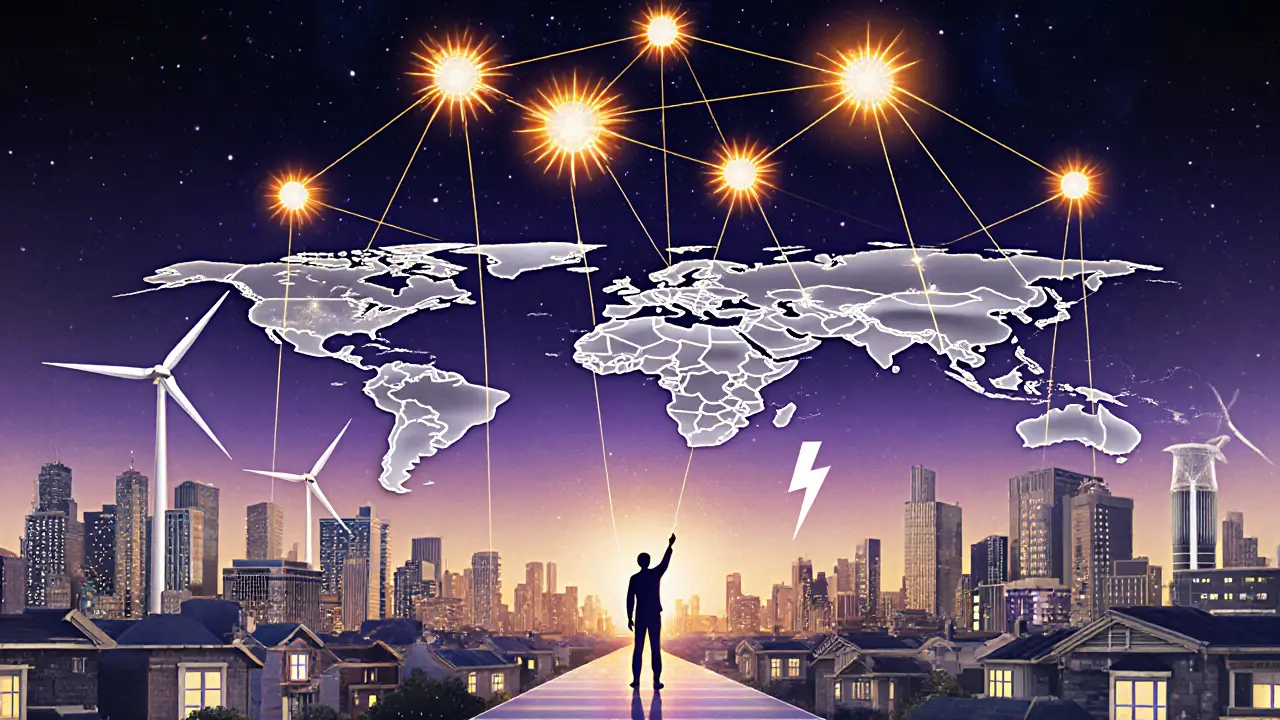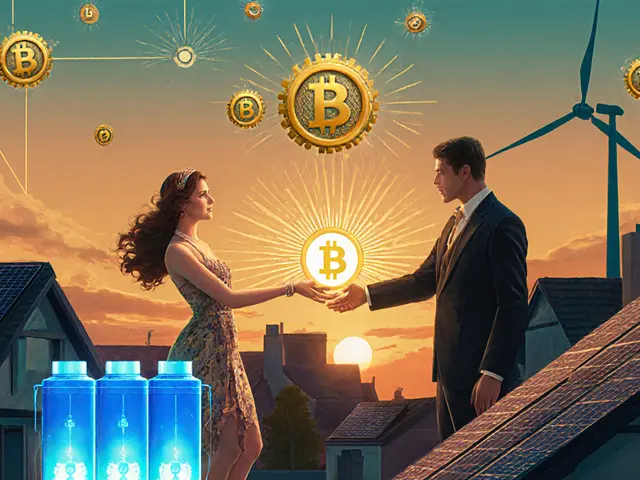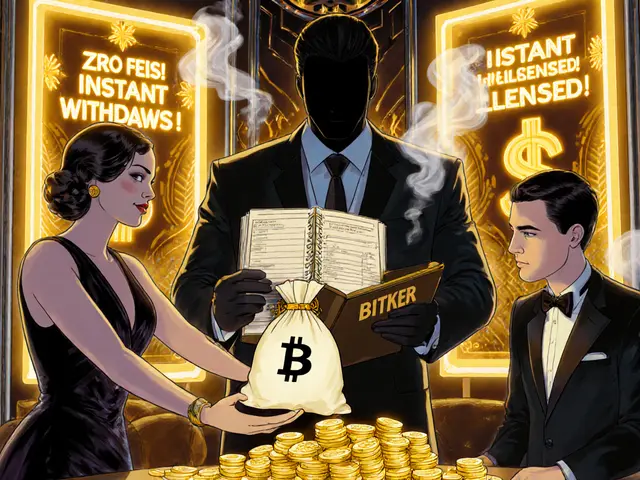Home Energy Savings Calculator
Calculate Your Energy Savings
Estimate how much you could save by installing solar panels, battery storage, and participating in blockchain-powered energy trading.
Your Estimated Savings
Annual Solar Savings
$0
From solar generation
Storage Benefits
$0
From stored energy trading
Total Annual Savings
$0
After 5 years
With blockchain-enabled peer-to-peer energy trading, you could earn up to 30% more from your excess energy compared to traditional utility buyback rates.
Imagine your neighborhood generating its own power from solar panels on rooftops, storing extra energy in batteries, and selling it directly to neighbors - no utility company in between. This isn’t science fiction. It’s happening right now, thanks to the combination of microgrids and blockchain technology.
What Exactly Is a Microgrid?
A microgrid is a small, self-contained power network that can run on its own or connect to the main grid. It usually includes renewable energy sources like solar panels or wind turbines, energy storage systems like lithium-ion batteries, and smart controllers that manage when and how power flows. Unlike the old-fashioned power grid, which relies on giant power plants sending electricity hundreds of miles, microgrids produce and use energy locally. That means less waste, fewer outages, and more control for communities.When a storm knocks out the main grid, a microgrid can disconnect and keep running. Hospitals, military bases, and college campuses already use them. But until recently, they were limited to just managing power - not trading it.
Why Blockchain Fits Perfectly With Microgrids
Blockchain is best known for cryptocurrencies like Bitcoin, but its real superpower is trust without middlemen. It’s a digital ledger that records every transaction in a way that can’t be changed or faked. No bank. No regulator. Just code and consensus.That’s exactly what energy trading needs.
In a traditional system, if your solar panels make extra electricity, you sell it back to the utility. They pay you a low rate, often after months of paperwork. The process is slow, opaque, and controlled by one company. With blockchain, your neighbor can buy your excess power directly - in seconds - at a fair price you both agree on.
This isn’t theoretical. In Brooklyn, New York, the TransActive Grid project lets residents trade solar energy using blockchain. A homeowner with panels sells power to someone across the street. The transaction is recorded on a blockchain, payment is automatic, and no utility company touches the money.
How Smart Contracts Automate Energy Trades
At the heart of blockchain-powered microgrids are smart contracts. These are self-executing programs stored on the blockchain. You set the rules - like “I’ll sell 5 kWh at $0.12 per kWh when my battery is above 80%” - and the contract handles everything else.When your neighbor’s device detects they need power, the smart contract checks:
- Is your battery charged enough?
- Is the price within their budget?
- Is the grid stable enough to transfer power?
If all conditions are met, the power flows, the money transfers, and the transaction is locked into the blockchain. No invoices. No delays. No disputes.
This automation cuts costs for everyone. Utilities don’t have to manage small transactions. Prosumers (people who both produce and consume energy) earn more because they’re not paying middlemen fees. And consumers get cheaper, cleaner power.

Four Real-World Uses Beyond Just Selling Power
Blockchain doesn’t just help with peer-to-peer electricity sales. It’s solving bigger problems too:- Renewable Energy Certificates (RECs) - Every time you generate clean power, you earn a digital certificate proving it. Blockchain makes these certificates tamper-proof and easy to track. No more fake green energy claims.
- Demand Response - When the grid gets overloaded, utilities ask users to cut usage. With blockchain, smart contracts can automatically reward you for turning off your AC or charging your EV at off-peak times - and pay you instantly in crypto or credits.
- Green Hydrogen Supply Chains - Hydrogen made with renewable energy is a clean fuel. Blockchain tracks every step: who made it, where it’s stored, and who bought it. That builds trust in a new market.
- EV Charging Networks - Imagine plugging your electric car into a microgrid-powered station and paying only for the solar energy you used - not the grid’s mixed fuel source. Blockchain verifies the source and charges you fairly.
Why This Beats the Old Grid
The traditional power system was built for one-way flow: big plants → transmission lines → homes. It’s rigid, inefficient, and centralized. A single transformer failure can blackout a whole city.Blockchain microgrids flip that model:
| Feature | Traditional Grid | Blockchain Microgrid |
|---|---|---|
| Control | Centralized (one company) | Distributed (users and devices) |
| Transparency | Opaque pricing, hidden fees | Every transaction visible and verifiable |
| Settlement Time | Weeks or months | Seconds |
| Cost to Trade | High (middlemen, billing systems) | Low (automated, no intermediaries) |
| Resilience | Single points of failure | Self-healing, local operation |
Studies from the Academic Journal of Science and Technology show blockchain microgrids improve energy use by up to 27% in pilot communities. That’s because people use power more wisely when they see real-time prices and earn directly from their own production.

Challenges Still to Solve
This isn’t perfect yet. There are real hurdles:- Speed - Some blockchains can’t handle thousands of transactions per second. Newer ones like Solana or Polygon are faster, but adoption is still low.
- Regulation - Most states don’t allow direct peer-to-peer energy sales. Utilities lobby hard to keep control.
- Stability - When a microgrid switches from connected to island mode during a blackout, power surges can happen. Smart controllers and AI are being added to prevent this.
- Energy Storage - Batteries are still expensive. Without affordable storage, you can’t store solar power for nighttime use.
But these aren’t dead ends - they’re engineering challenges. Companies like LO3 Energy, Power Ledger, and Electron are already building solutions. Governments in Australia, Germany, and parts of the U.S. are testing legal frameworks to let communities run their own energy markets.
The Bigger Picture: The Energy Internet
This isn’t just about one neighborhood trading solar power. It’s the start of an energy internet - a global network where energy flows like data on the web. You’ll be able to buy wind power from Iceland, solar from Morocco, or hydro from Canada - all tracked, verified, and paid for in seconds.Imagine your smart home choosing the cheapest, cleanest power available at any moment - from your own panels, your neighbor’s battery, or a distant wind farm - all managed by blockchain. That’s the future. And it’s not far off.
Right now, the biggest barrier isn’t technology. It’s mindset. We’ve been trained to think of electricity as something you just pay for - not something you can produce, share, and profit from.
What’s Next?
If you’re a homeowner with solar panels, start asking your utility: “Can I trade power with neighbors?” If you’re in a community with a microgrid, push for blockchain pilot programs. If you’re a developer, look into open-source tools like Hyperledger Fabric or Ethereum-based energy platforms.The pieces are here. The tech works. The savings are real. All that’s missing is the will to change.
Can I really sell my solar power to my neighbor using blockchain?
Yes. Projects like Brooklyn’s TransActive Grid already let neighbors trade solar power using blockchain. Smart contracts handle the pricing, delivery, and payment automatically. You don’t need a utility company to approve it - just a compatible meter and a blockchain-enabled platform.
Is blockchain energy trading secure?
Extremely. Blockchain records every transaction in a tamper-proof, time-stamped ledger. Each trade is verified by multiple nodes in the network, making fraud nearly impossible. Plus, encryption protects user identities. Some systems even combine blockchain with AI to detect unusual patterns and prevent cyberattacks.
Do I need special equipment to join a blockchain microgrid?
You’ll need a smart meter that can communicate with the blockchain network, and ideally, a home energy management system. Many new solar and battery systems (like Tesla Powerwall or LG Chem) are compatible. If you’re in a pilot program, the provider usually supplies the necessary hardware.
How does this help the environment?
It encourages more renewable energy use by making it profitable. When people can earn from excess solar or wind power, they invest in more panels and batteries. It reduces reliance on fossil fuels, cuts transmission losses (since power doesn’t travel far), and prevents energy waste. Studies show blockchain microgrids can increase renewable adoption by 30% or more in pilot areas.
Is this legal in my state?
It depends. A few states like New York, California, and Hawaii have passed laws allowing peer-to-peer energy trading. Most others still require all sales to go through the utility. Check your state’s public utilities commission website or look for local microgrid pilot programs - they often operate under special exemptions.
What’s the cost to set up a blockchain microgrid?
For a single home, adding a smart meter and compatible battery might cost $500-$1,500. Community-scale microgrids with blockchain platforms can cost $100,000-$1 million, depending on size. But many are funded through grants, cooperatives, or government clean energy programs. The long-term savings on bills and increased property value often pay it back in 5-7 years.




andrew seeby
November 4, 2025 AT 21:23Michelle Stockman
November 6, 2025 AT 03:10Abelard Rocker
November 7, 2025 AT 20:29Kyung-Ran Koh
November 9, 2025 AT 11:07Missy Simpson
November 10, 2025 AT 06:24Tara R
November 10, 2025 AT 14:45